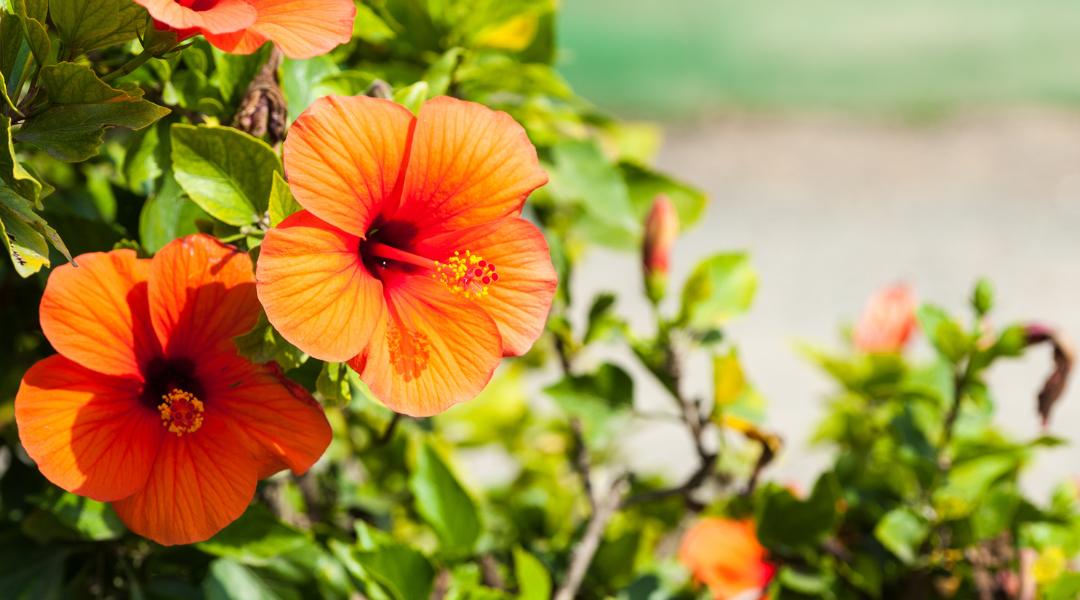“Tropical hibiscus flowers only live for one day.” Karen (my “brown thumb” blog partner) told me she heard that was true. I had trouble believing it.
If the flower only lasts one day, why does it seem like hibiscus plants are always covered flowers? Not dried-up, dead flowers, but big vibrant blossoms! This can’t be true, right?
Plus, hibiscus blooms last so long out of water (relative to other cut flowers), surely they can last on the damn plant for more than a single day.
I decided to get to the bottom of Karen’s claim. So I decided to some research on hibiscus.
I found so much fun information, I decided to write a whole blog post about hibiscus. In this post, I’m covering the basic, care tips, DIY uses, and more. And yes, I’ll get to the bottom of Karen’s claim.
Hibiscus Basics
Here’s something easy to remember: The botanical name for hibiscus is . . . Hibiscus.
That’s pretty much where the easy ends. There are several hundred types of hibiscuses, both big and small!
Hibiscus is a beautiful plant has attracted many hybridizers who have worked long and hard to create tons of eye-catching cultivars. Flowers range in color from cool blues to the vibrant reds most people envision when they think of a tropical hibiscus flower.
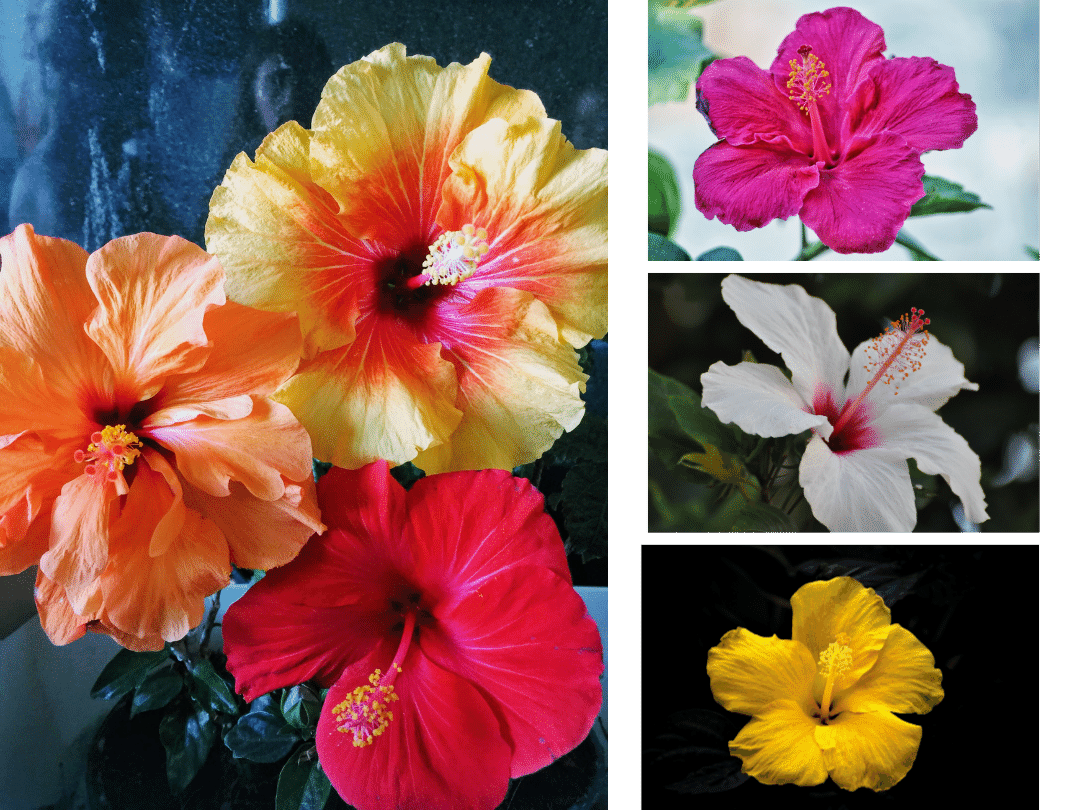
Hibiscus Varieties
- Tropical Hibiscus: The most common type of hibiscus we see in both tropical and subtropical regions is Hibiscus rosa-sinenesis. I saw a bunch of this variety for sale at a Whole Foods Market today–that’s how common it is in warmer areas like Los Angeles. This plant is common for good reason, the evergreen plant blooms almost year-round in zones 9 and 10.
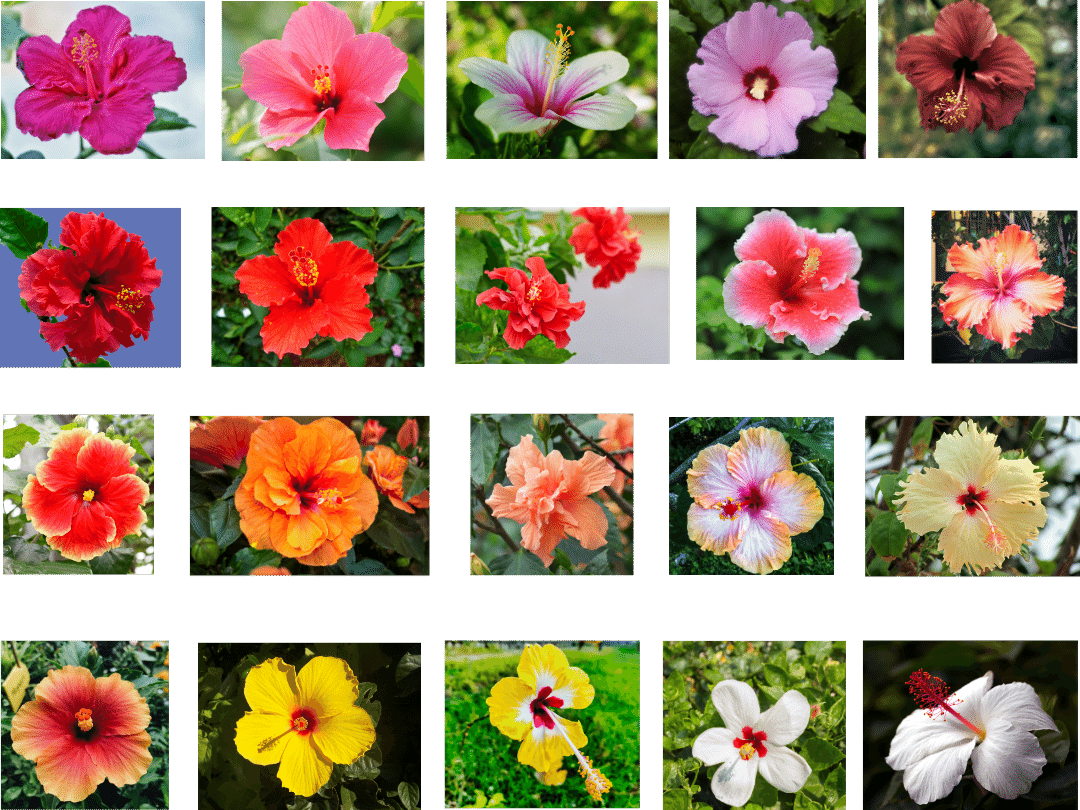
- Shrub Hibiscus: In relatively cooler climates (meaning too cool for the tropical hibiscus plants), you’ll typically see the hardier shrub type hibiscus, Hibiscus syriacus (AKA, the Rose of Sharon). This plant tends to get much larger than H. rosa-sinensis, and can reach 15’ tall. This type of hibiscus is also very common in Southern California.
- Edible Hibiscus: The hibiscus with the edible calyxes (which is used to make tea) is Hibiscus sabdariffa. While many types of hibiscus flowers are edible, including the two hibiscuses previously noted, this last variety is considered the best variety for consumption. The flowers, leaves and calyxes are all edible.
- Hardy Hibiscus: Don’t give up on hibiscus if you live in colder climates. Hardy hibiscus species like Hibiscus moscheutos, Hibiscus mutabilis, and Hibiscus coccineus are perennials that can take the chill. These hibiscus species can typically grow in zones 5 to 9.
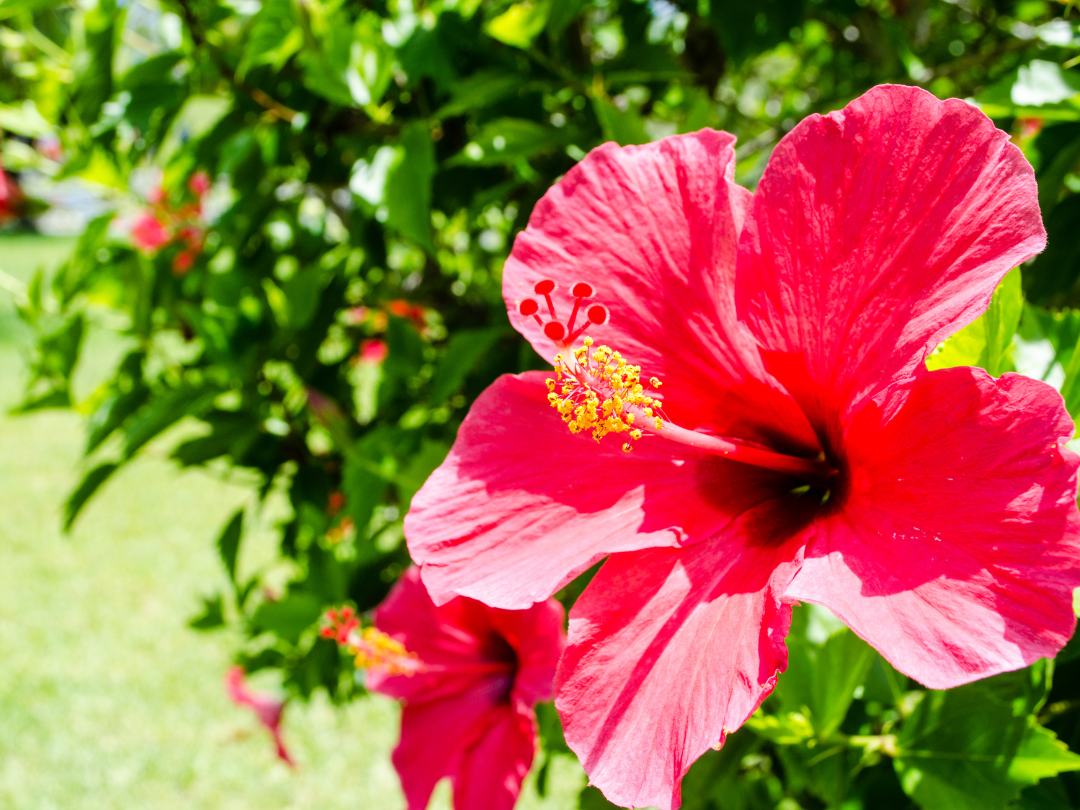
How to Care for Your Tropical Hibiscus Plant
Because of where I live and where I commonly travel, I’m most familiar with the tropical hibiscus. Here are my tips for keeping it alive and happy . . .
Tropical hibiscus prefer a temperature range between 60 – 95 degrees. Outside this range, the plant will start to show stress, the flowers will be smaller and misshapen, and some leaves will drop. More stress will cause the tropical hibiscus plant to stop flowering. And extreme conditions will kill the plant.
Luckily, tropical hibiscus makes a fine houseplant.
Indoors, tropical hibiscus need some direct sunlight to bloom. Don’t fret if you’re in a colder climate: a few hours of sunlight should be enough. You just want to make sure you’re feeding your plant enough — they need an extra nutritional boost if they are indoors.
Common sense will tell you that the hibiscus needs more water in warm climates than in cold. They like a lot of water, so you don’t want to wait until the soil dries out to water your hibiscus plant. But be careful not to overdo it because hibiscus can drown in standing water.
Hibiscus also like to be kept clean! A shower in warm water to prevent bugs at least twice a month should keep your plant happy.
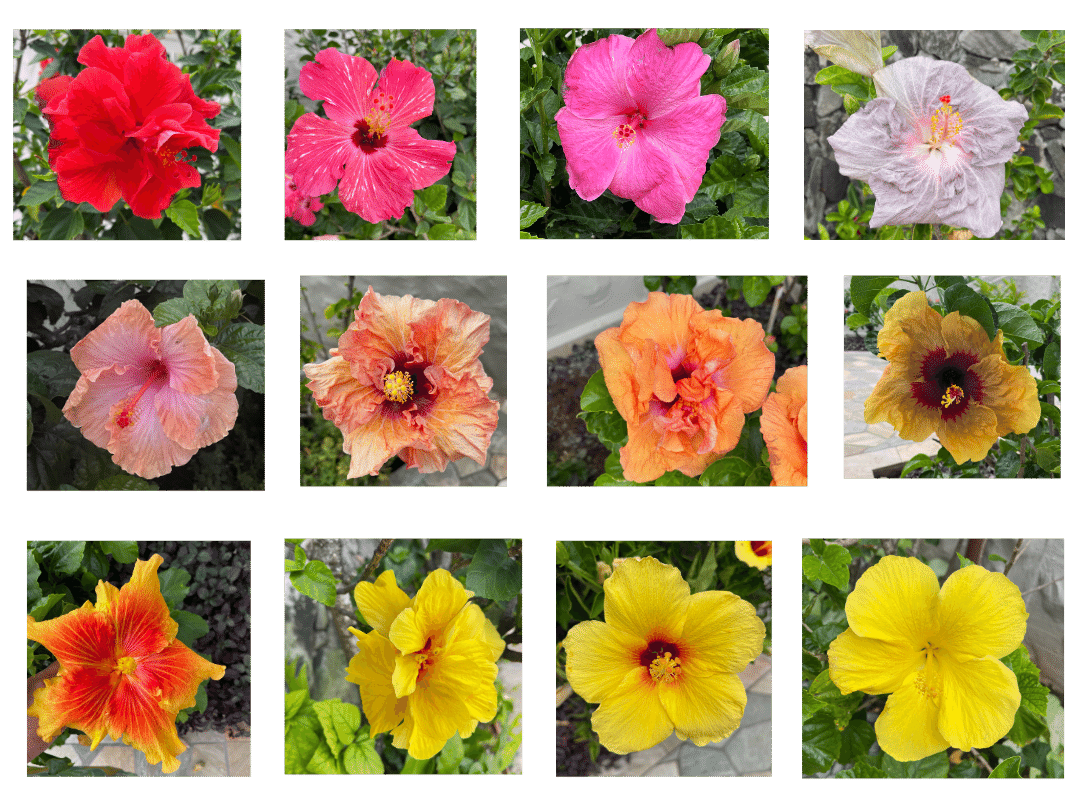
Five Fun Facts About Hibiscus
1. The flower is edible.
2. You may be drinking it! The flower is used in two common teas – Celestial Seasonings’ Red Zinger Tea and Tazo’s Passion Tea.
3. The flower is long(ish) lived out of water and often worn behind the ear. Left ear signifies the wearer is spoken for. right ear means the wearer is single.
4. Hibiscus is KitchenAid’s 2023 Color of the year.
5. The blooms typically last only one day!
Karen was right. One day!! All that effort to produce a beautiful bloom that lasts less than 24 hours.
This state flower of Hawaii is a fleeting beauty. However, there are new varieties that are able to bloom longer.
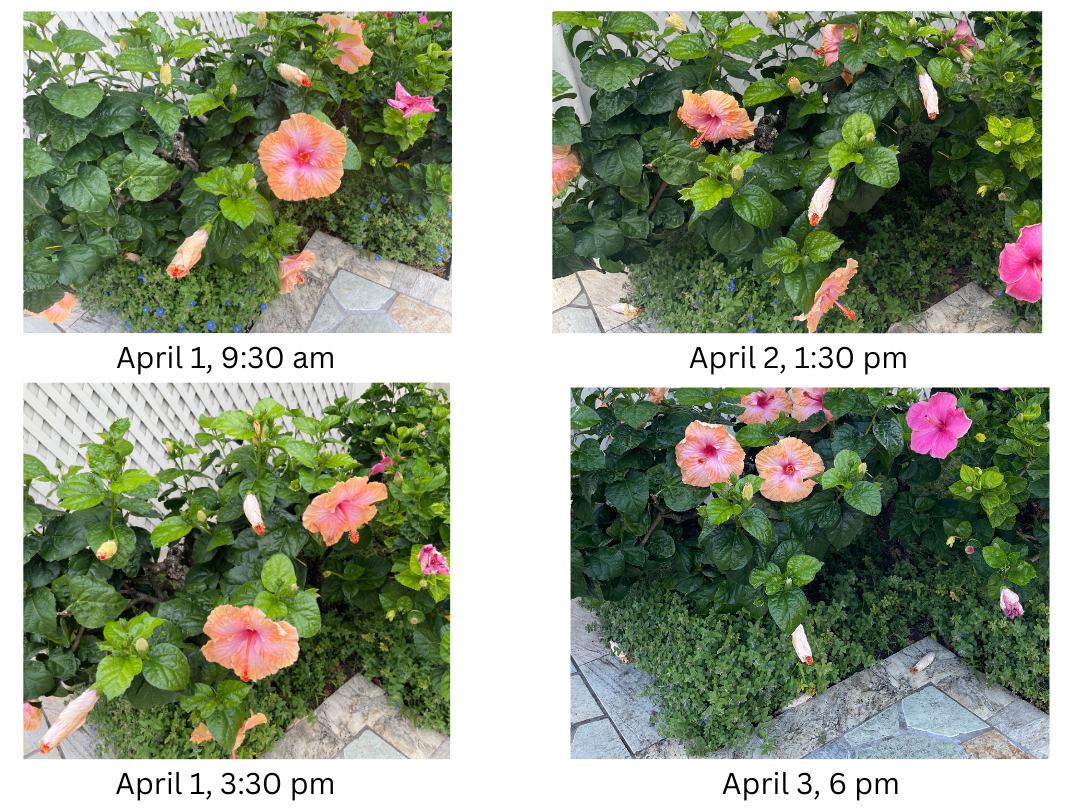
Five Uses for Hibiscus
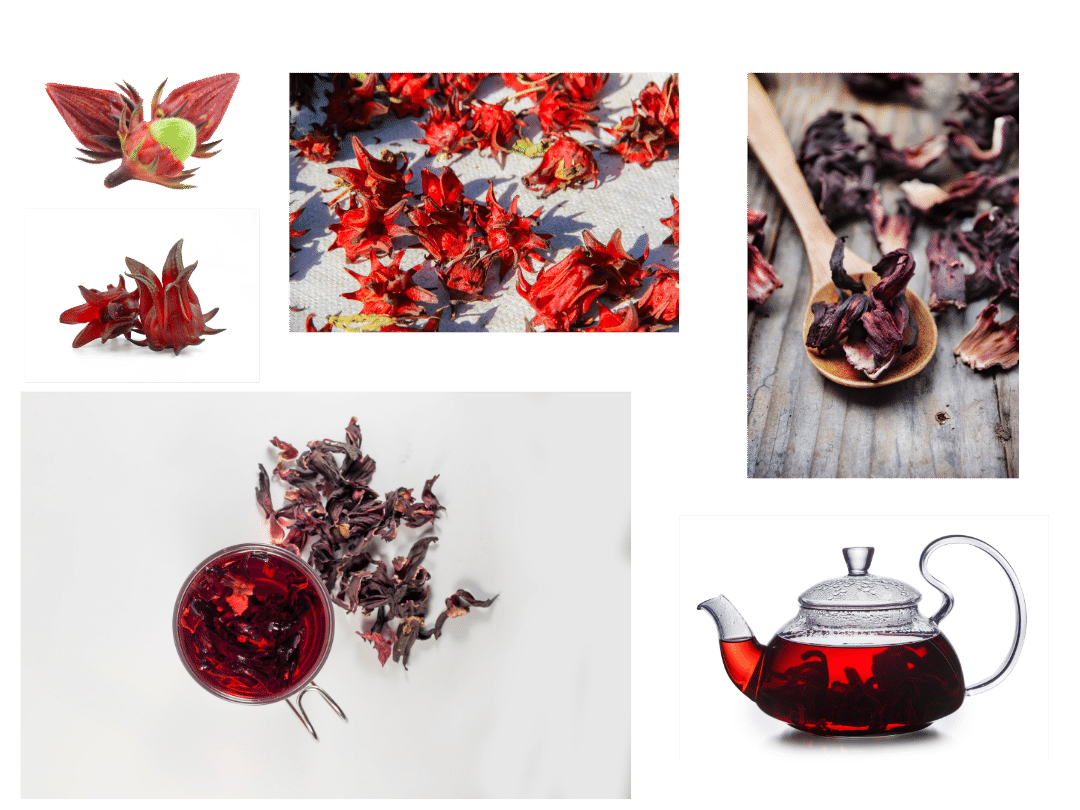
1. Cook with it
Even though all varieties of hibiscus may be edible, the best variety of hibiscus for edible flowers, leaves, and calyxes is Hibiscus sabdariffa.
This plant is used to make a simple syrup for flavoring recipes. The taste is tart, something like a cranberry. According to a 2016 Los Angeles Times article about hibiscus, Hibiscus sabdariffa is “slightly tannic on the tongue yet with earthy berry hints, hibiscus cuts the sugariness of sweets, adds pop and color to cocktails and vinaigrettes, and tang to savory dishes.”
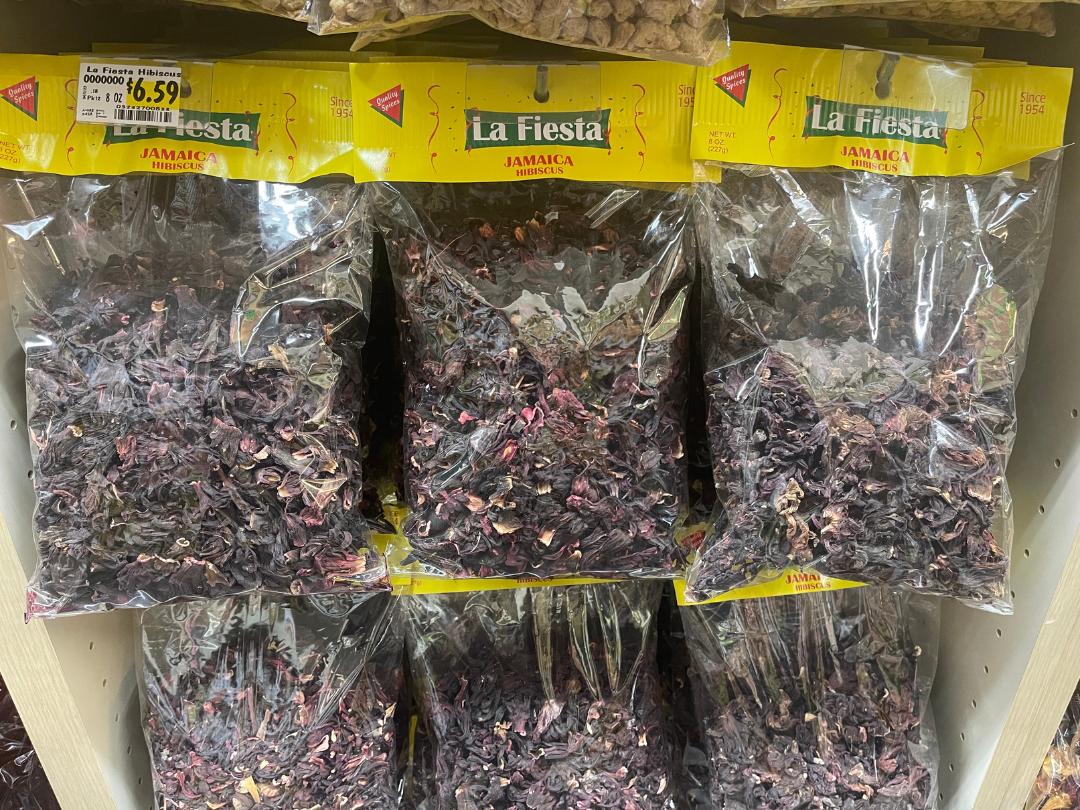
Dried hibiscus should be washed quickly before use and will soften as it simmers.
Hibiscus Syrup Recipe
This recipe is taken from a 2016 Los Angeles Times article written by Jeanne Kelley. It takes about 35 minutes and makes ¾ cup.
Ingredients
- 3 cups water
- 1 cup dried hibiscus blossoms
- 2/3 cup sugar
“In a heavy saucepan, combine the water and hibiscus blossoms over high heat and bring to a boil. Reduce the heat to a simmer and cook for 1 minute. Cover and remove from heat and set aside to steep for 1 hour. Strain the tea; discard the hibiscus. Return the tea to the saucepan and stir in the sugar. Boil the tea over medium high heat until the mixture is the consistency of thick syrup and is reduced to 3/4 cup, about 25 minutes. Cool the syrup completely. The syrup will keep, covered and refrigerated, for 5 days.”
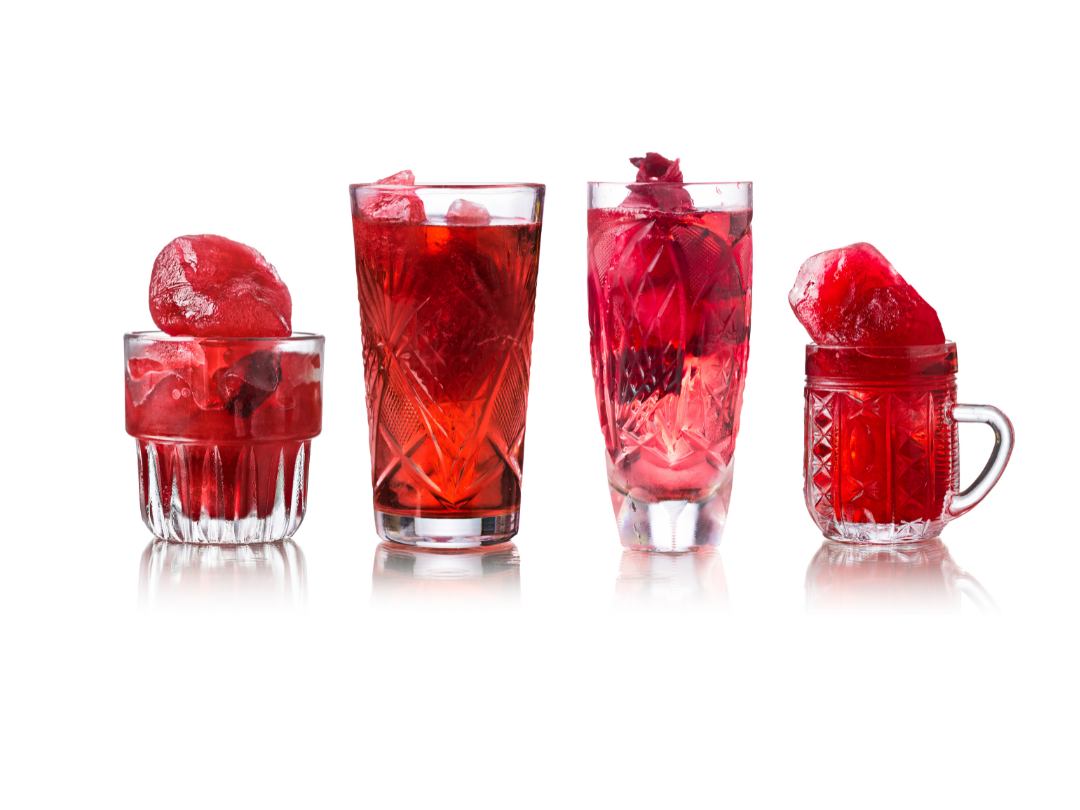
2. Drink it
Hibiscus, particularly the fresh or dried calyces of the roselle flower, is used to make hot and cold beverages. It is commonly used in teas and even has a drink named after itself.
Agua de Jamaica Recipe
Hibiscus sabdariffa is also referred to as roselle, Jamaican sorrel, Jamaican hibiscus, or flor de Jamaica. This refreshing drink is named after the flower. This recipe is from the cookbook, Mexican Food: The Ultimate Cookbook.
Ingredients
- 2 cups hibiscus blossoms
- ½ oz crushed cinnamon stick
- Pinch of Cardamon
- 2 Whole cloves
- 4 Allspice berries
- ½ cup Sugar
- 12 cups water
– Put all the ingredients in a saucepan and bring to a boil. Stir to dissolve the sugar.
– Reduce the heat and simmer for 20 minutes.
– Remove the pan from the heat and let cool completely.
– Strain through a fine-mesh sieve and refrigerate for at least one hour before serving over ice.
3. Wear it
The hibiscus flower will last the day on or off the plant! You can wear it behind your ear, in your hair, or around your neck. This flower is also used in a lei po’o, which is a lei for your head.
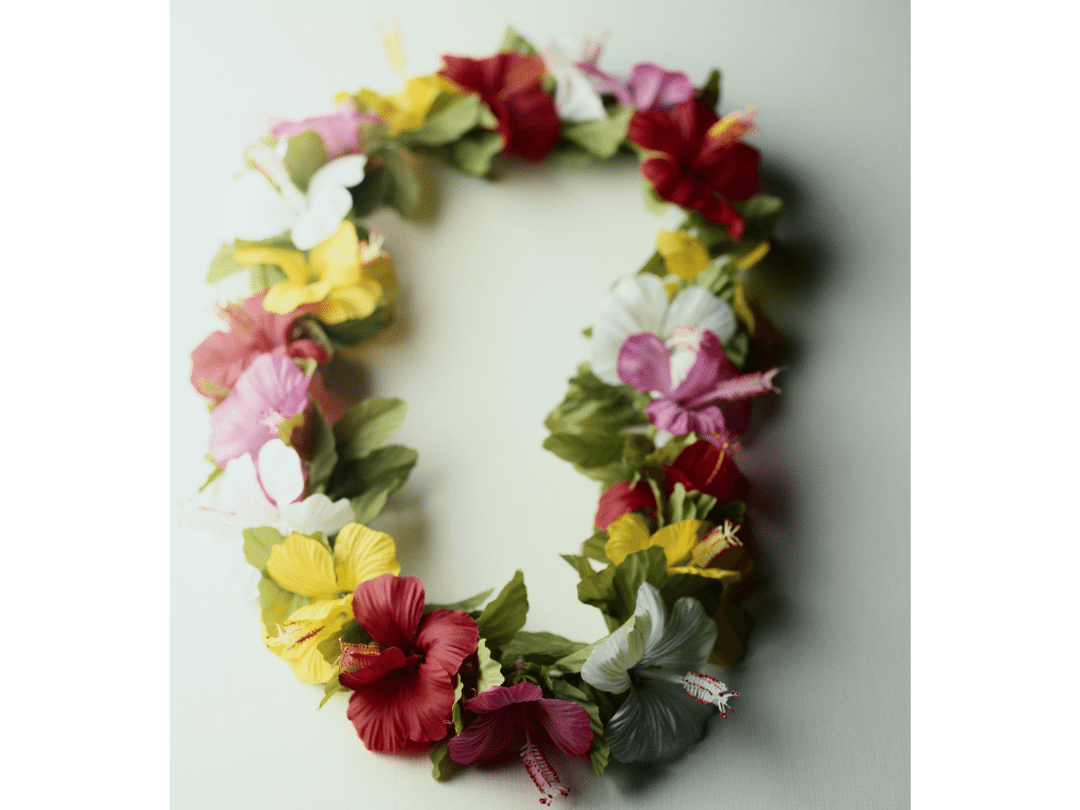
4. Add it to a floral arrangement
Hibiscus are gorgeous in bouquets!
The bad news about using the flower of the hibiscus in a floral arrangement is that the stem is VERY short.
The good news is that the stem does not need to go into water. A great floral hack used to add hibiscus to a floral arrangement is to use a straw.
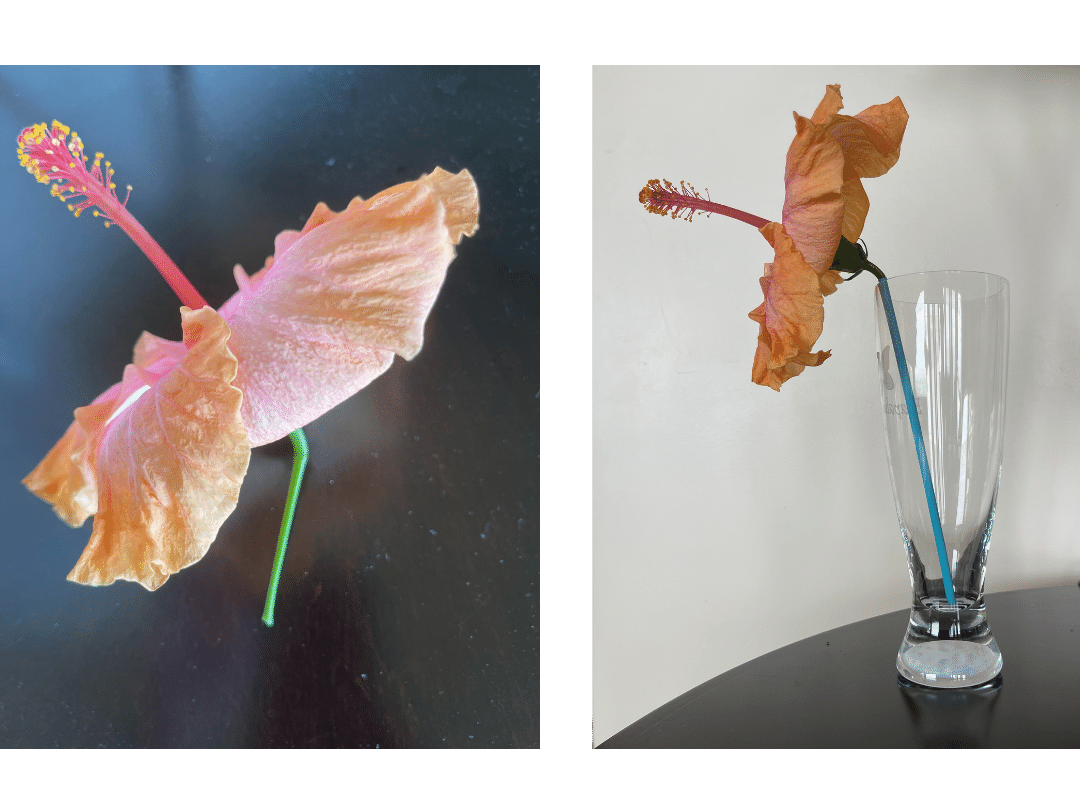
When you add a hibiscus flower to your arrangement it will look beautiful the first day . . .
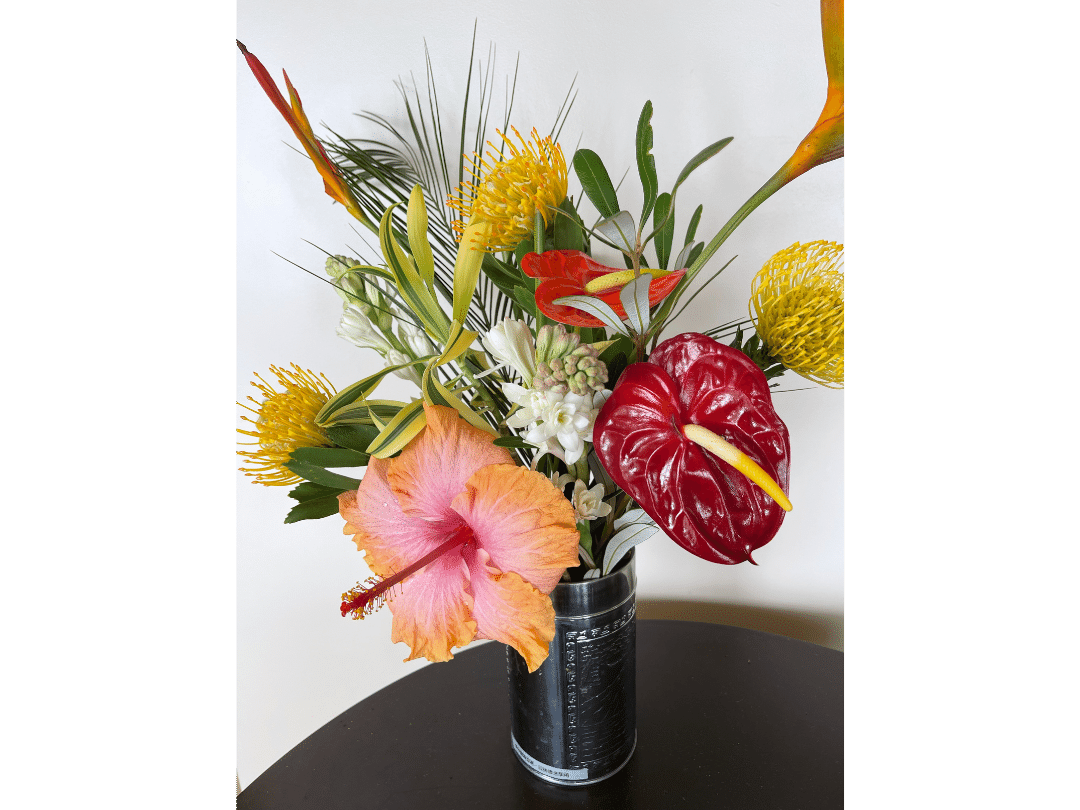
The next day you will find that the flower has folded back up!
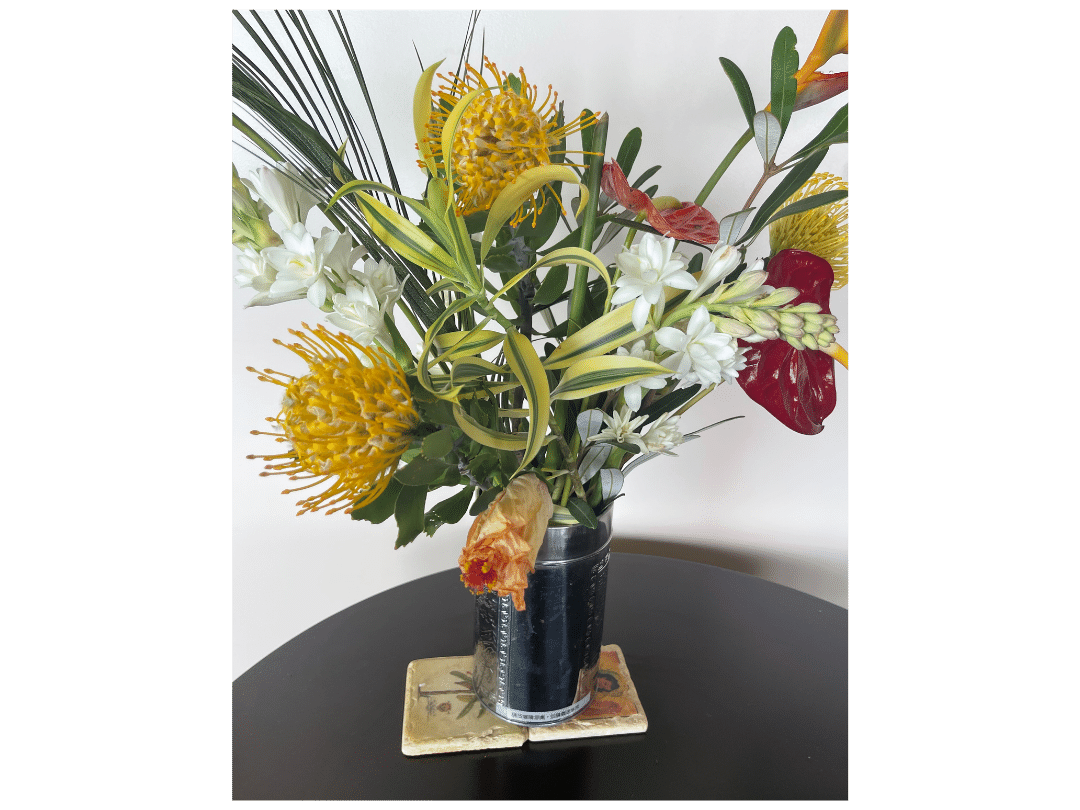
So, it’s time for a new one! Toss yesterday’s hibiscus and swap in another (using your straw hack).

And the next day, swap it out again!
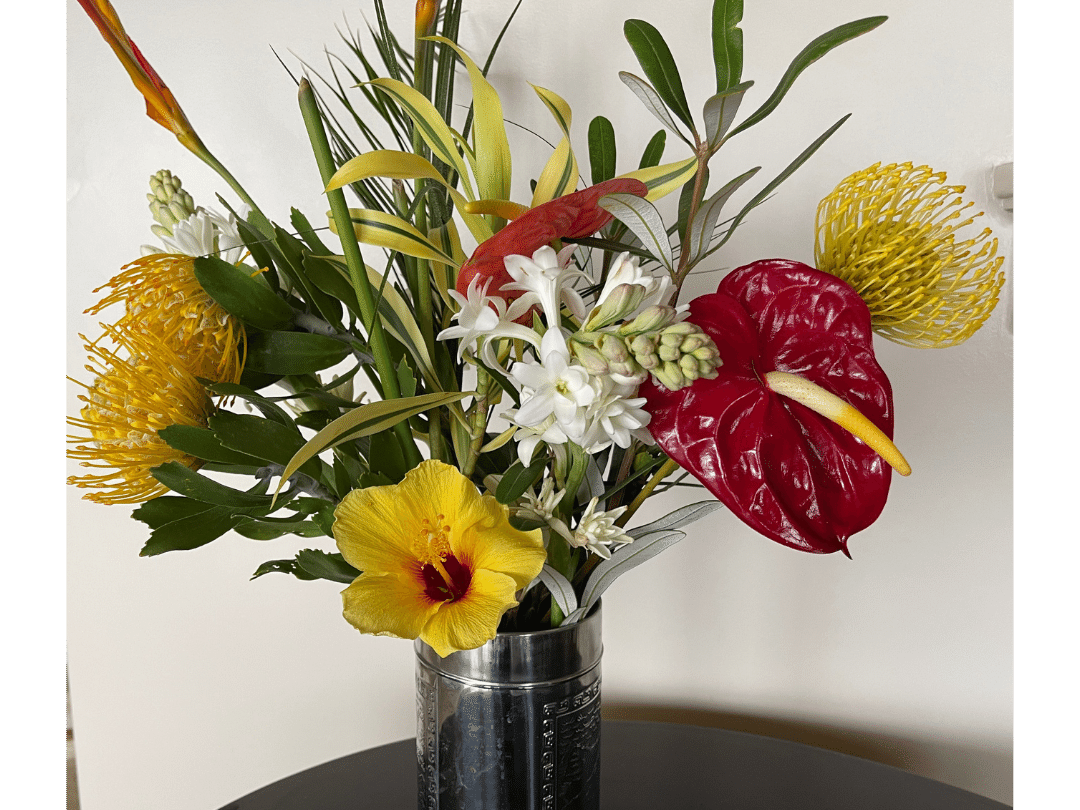
5. Put its image on . . . everything!
The hibiscus is the state flower of Hawaii, and the image of this beautiful flower is EVERYWHERE. You’ll find it on everything from Hawaiin shirts, bathing suits, and dresses to kitchen towels, beach towels, cups, bedspreads, art work, and wallpaper.
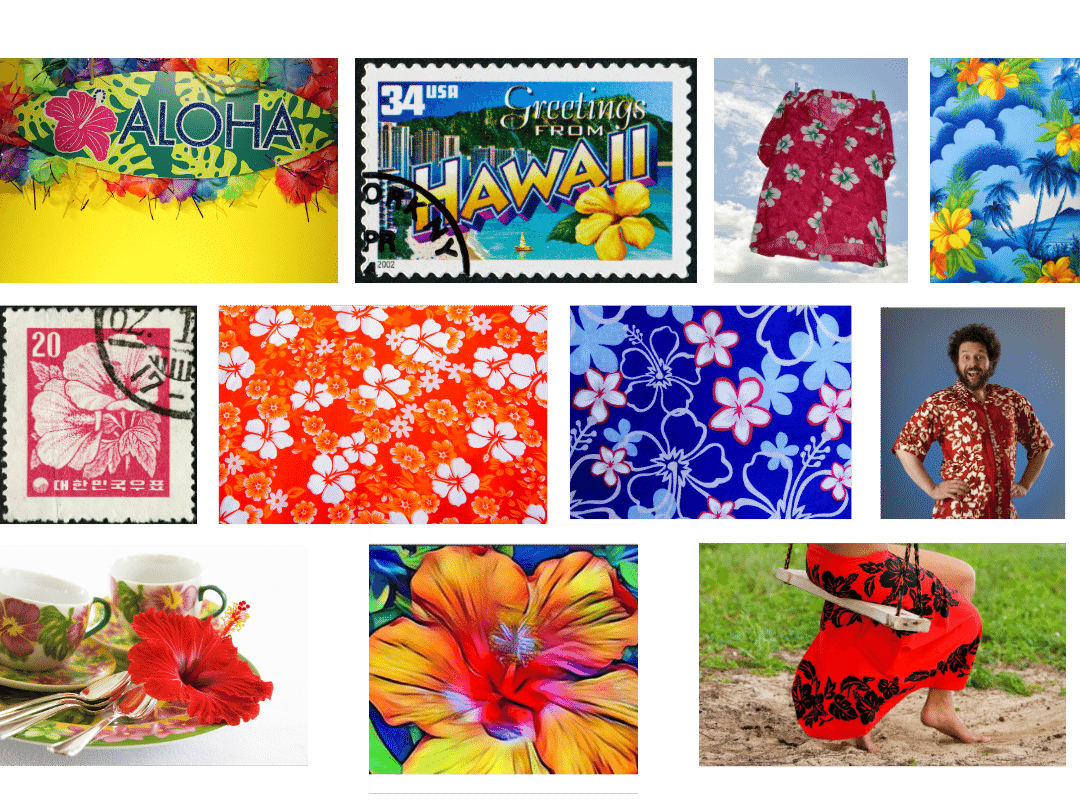
A few hibiscus-themed products you might like
- KitchenAid mixer in “Hibiscus” (the 2023 color of the year)
- Pretty hibiscus patterned material
- A jar of hibiscus spice
- And, you can bring hibiscus into your home with this beautiful hibiscus wallpaper on Etsy
We partner with select companies whose products and/or services we love. Some of the links on this page may be affiliate links. If you purchase an item using our affiliate link, we may receive a small commission (at no added cost to you). We appreciate your support.

